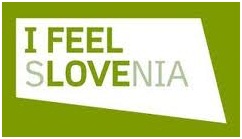Statistics may show the steadily growing number of visitors – yet the potential of Slovenia’s tourism remains, to a large degree, undiscovered by foreign investors
In 2012 the number of foreign tourists in Slovenia exceeded the country’s population for the first time. The record-breaking 2.1 million visitors represent a 5.8 percent increase over 2011 and a 10 percent increase over the 2008 figures. The number of the foreign tourists has been steadily growing since the country’s independence in 1991. This year, Slovenia received a great deal of attention from the global media related to the country’s present unfavourable political and economic situation.
Local tour operators and hoteliers feared that this somewhat unwanted publicity could have a negative impact on the number of visitors. Initial statistics for the three winter months show a very modest increase: yet the good news is that growth is still present and that the fears may have been unfounded.
In fact, this shouldn’t come as a surprise. Slovenia has much to offer to its visitors and has, for years, been a secret tip for connoisseurs: the sunny Mediterranean, Alps, numerous spas, good infrastructure and unspoilt nature, all packed in a rather small area close to major global attractions such as Venice or Vienna. Add to that, wonders of nature such as the spectacular caves in the Karst region or the discreet charm of the national capital Ljubljana. Visitors often describe Ljubljana as a Prague in a smaller and much less crowded version.
The number one Slovenia destination for foreign tourists is Portorož and its picturesque neighbour Piran. However, the coast is not the main attraction − only 16 percent of tourists decide for the small part of the Mediterranean which belongs to Slovenia. The most popular destination among foreign visitors are Slovenia’s mountains − over 27 percent of the visitors stay in one of country’s Alpine resorts such as Bled, Kranjska Gora, Bovec or Bohinj. Some 20 percent choose the capital as their destination and around 15 percent, one of Slovenia’s many spas.
Interestingly enough, despite its undisputed potential, foreign investors still have to discover Slovenian tourism. The Terme Maribor spas and hotels network was acquired by a group of Russian investors last year. The renovated landmark Palace Hotel in the seaside resort of Portorož has been a part of Kempinski Group for some time. These two examples are among the few exceptions. But as a growing number of visitors discover Slovenia’s charms, investors may well follow.
source: invesslovenia.org

